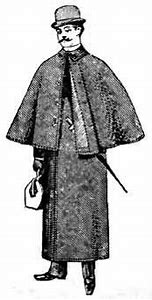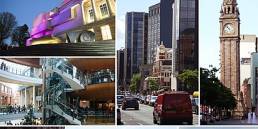Did you know that a man from Antrim, John Getty McGee designed an Ulster coat that became associated with Sherlock Holmes?
The ads describing the coat as a “tailoring phenomenon” that brought Northern Ireland’s clothing trade “unprecedented fame and reputation” quoted some of its accolades – “the best storm defier ever produced” which caused the word ‘Ulster’, according to one advertisement, to be “imported into every language in the civilised world.”
John Getty McGee owned the Ulster Overcoat Company and had a shop based on High Street in Belfast. The double-breasted coat was cut from heavy Donegal tweed. Features of the coat included pleats, pockets and a belt also giving the option to add a cape.

It is often seen in period production of Victorian novels, such as those of Charles Dickens and Sir Arthur Conan Doyle. It has become a signifier in a great many late-Victorian costume dramas since.
In the Sherlock Holmes short story Blue Carbuncle for example, Watson recounts that: “It was a bitter night, so we drew on our ulsters and wrapped cravats about our throats.”
The coat also features briefly in James Joyce’s novel, Dubliners. In the story ‘Grace,’ the character of Mr. Power is wearing a ulster coat when he approaches the drunk Mr. Kernan: “a tall agile gentleman of fair complexion, wearing a long yellow ulster, (coming) from the far end of the bar…”
In L.M. Montgomery’s Anne of Green Gables, Diana is mentioned to wear a “blood-red ulster” at Christmas.
Marlow, the narrator in Joseph Conrad’s Heart of Darkness, observes: “There was an agent buttoned up inside an ulster and sleeping on a chair on a deck within three feet of me.”




